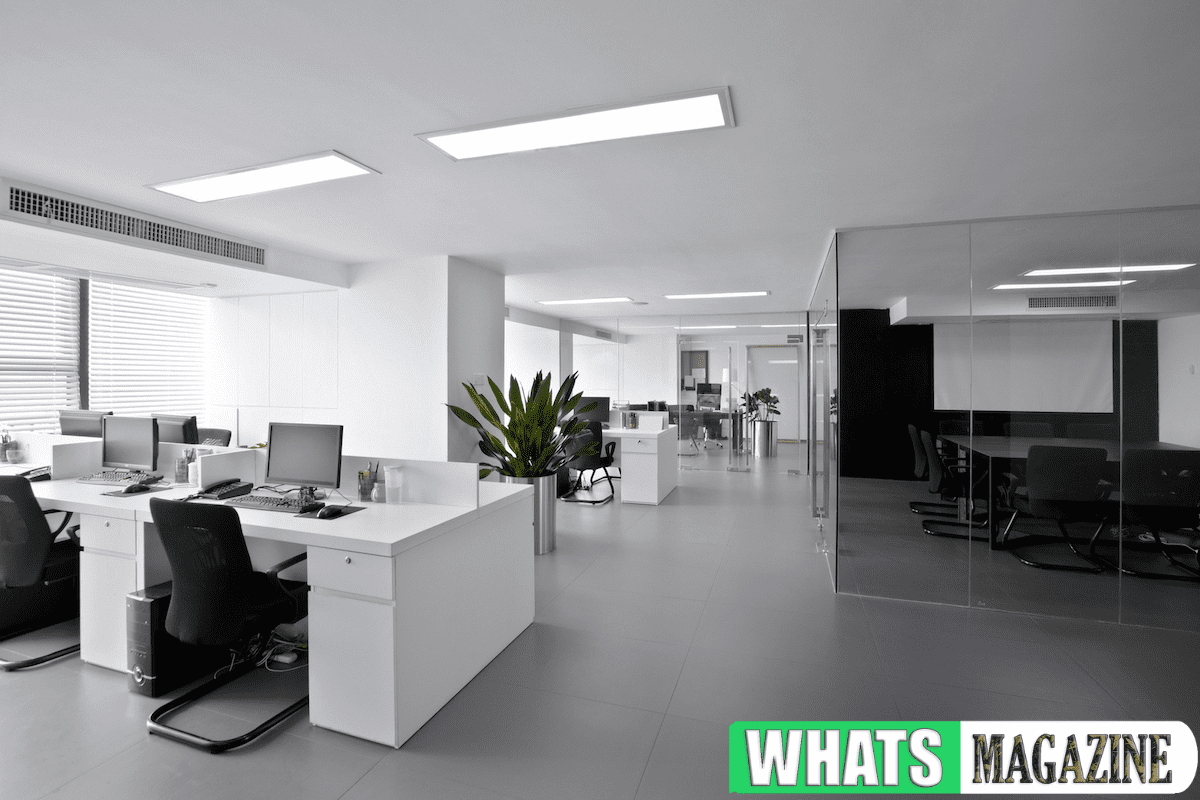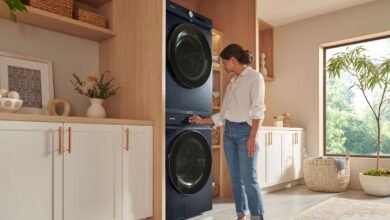A well-designed office space can make a significant difference in a business’s productivity, morale, and overall success. When employees feel comfortable, inspired, and empowered by their workspace, they’re more likely to produce high-quality work, collaborate effectively, and feel invested in their company’s mission.
Designing an effective office space can be complex, requiring attention to productivity, well-being, and brand image. Seeing that it’s essential to create a design that fully serves its intended purpose, you indeed have questions to ask before designing an office space, whether remodeling or expanding.
That said, here are the key elements that contribute to a well-designed office space. The article will also provide tips for utilizing these elements to create an environment that fosters productivity and creativity:
In this article
Lighting
Lighting affects visibility and mood, which can impact the productivity and well-being of employees. Natural light is the best source of light, as it provides a sense of well-being and helps regulate circadian rhythms, but if that’s not an option, artificial lighting can mimic its qualities.
The key is to use a combination of lighting sources, including overhead lighting, task lighting, and accent lighting. Overhead lighting should provide sufficient illumination for the entire space, while task lighting can focus on specific areas, such as workstations or meeting rooms. Accent lighting can highlight particular features, such as artwork or architectural elements.
Color Scheme
When selecting a color scheme for the office, it’s essential to consider the nature of the work. For example, a bold and vibrant color scheme in a creative industry such as graphic design may be more appropriate. In contrast, a law firm may benefit from a more subdued and professional color scheme. Additionally, incorporating neutral colors such as white, gray, or beige can help create a cohesive and timeless look that will stand the test of time.
Another essential factor to consider when selecting a color scheme is accent colors. Accent colors can be used to add interest and depth to the space and reinforce the company’s branding. Using accent colors in key areas such as furniture, artwork, and accessories can help tie the space together and create a cohesive look.
Furniture
Office furniture is a crucial component of office design that can significantly impact employee productivity and well-being. Comfortable and ergonomic chairs, desks, and other furniture can reduce the risk of physical strain and injuries, ultimately increasing productivity.
When choosing office furniture, it is vital to consider the needs of employees, such as their height, weight, and posture. Additionally, incorporating collaborative spaces, such as lounge areas or standing desks, can promote employee interaction and creativity, which can lead to more innovative ideas and solutions.
Apart from functionality, the aesthetic appeal of office furniture can also impact employee satisfaction and motivation. Choosing furniture that aligns with your brand image and company culture can also help reinforce your brand identity. The right furniture can help create a positive work atmosphere, increasing employee satisfaction and retention.
Technology
The use of technology has become a fundamental aspect of the modern workplace, and incorporating the latest technology in office design is essential. High-speed internet, video conferencing equipment, and ergonomic computer peripherals are all vital components of a technology-driven office. Providing employees with advanced technology tools can enhance productivity, promote communication, and facilitate collaboration.
Equipping offices with the latest technology helps employees work more productively and promotes a more collaborative environment. With high-speed internet, video conferencing equipment, and ergonomic computer peripherals, your employees can effectively perform tasks and coordinate their efforts, regardless of location.
Privacy
Although collaborative and open floor plans are trendy in the modern workplace, providing employees with private areas where they can work without disruptions is crucial. This could include soundproof meeting rooms, private offices, or phone booths. Employees can work with a sense of security, reduce stress levels, and improve their overall productivity by offering private areas.
Creating a workspace that promotes privacy can positively impact employees’ mental health and well-being. Employees can concentrate better on their tasks when they have access to private areas, leading to increased focus and productivity. By reducing distractions, private spaces allow employees to rest and refocus, enabling them to engage in deep work and leading to more meaningful outcomes.
Sustainability
As environmental concerns continue to grow, sustainability has become a crucial aspect of office design. To achieve a sustainable workplace, offices can incorporate eco-friendly materials, implement energy-efficient lighting, and introduce waste reduction programs, such as recycling and composting. Adopting sustainable practices in the office is beneficial for the environment and can lead to better employee well-being and reduced carbon footprint for the company.
Designing a sustainable office space is an ethical responsibility and a wise business decision. By promoting eco-friendly practices in the workplace, companies can attract and retain top talent who value sustainability. Moreover, sustainable offices often feature natural lighting and greenery, improving air quality and reducing employee stress levels.
Branding
Incorporating branding elements in office design is an effective way for companies to showcase their identity and mission. From company colors and logos to displaying achievements and awards, branding can visually represent the company’s culture and values. By incorporating branding elements into the office space, companies can create a cohesive and engaging environment that reinforces their brand identity.
Branding elements in the office can also foster a sense of belonging and pride among employees, leading to a positive work culture. When employees feel a connection to the company’s brand, they are more likely to identify with its values and mission, leading to increased job satisfaction and engagement. Branding elements can also create a lasting impression on visitors and clients, reinforcing the company’s reputation and credibility.
Final Words
A well-designed office space is essential for promoting productivity, creativity, and employee well-being. By incorporating lighting, color scheme, furniture, technology, privacy, sustainability, and branding, businesses can create an environment that fosters collaboration, innovation, and success. By investing in a well-designed office space, companies can improve employee satisfaction, attract top talent, and achieve long-term success.








